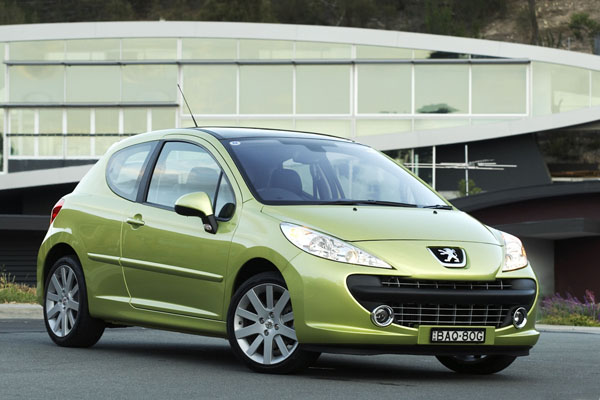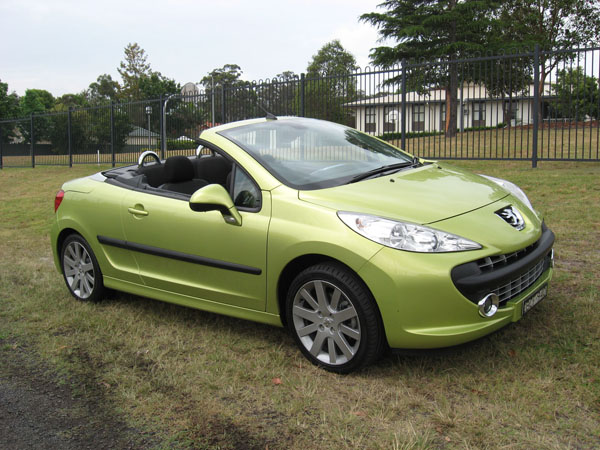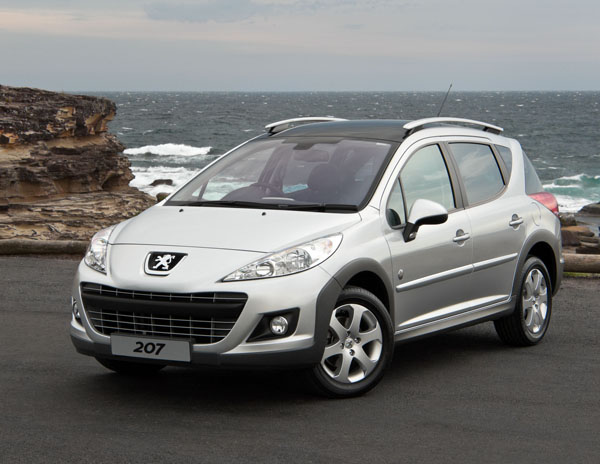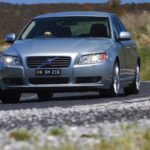Peugeot 207 is a small-medium French car and is substantially larger than the 206 it replaced in February 2007. People looking to keep clear of the madding crowd of car owners frequently opt for something from the Peugeot range. Though most 207s in Australia are owned by singles and couples, they can be used by families with young children.
It goes without saying that French flair is a major feature of the 207’s body and cabin styling. Yet interior space hasn’t been sacrificed for the sake of fashion. Peugeot designers are very clever at producing interiors that appear to be more spacious than they really are so there’s no feeling you’re travelling in a small car.
Boot space is good for this class and can be expanded by double-folding the back seats.
Ride comfort is excellent in a very French way and is a major feature of this when you talk to existing owners. Handling is precise and responsive though it doesn’t really fall into the hot-hatch category. That is until you explore the delightful little 207 GTi that’s aimed at keen drivers.
Peugeot 207 was initially sold as three- and five-door hatchbacks. A 207CC cabriolet joined the range a few months later, with a Touring station wagon being introduced in October 2007.
The Peugeot 207CC’s roof is fully automatic and can be opened and closed at speeds of up to 10 km/h. It has good space in the front seats but the back seats are for emergency use only. Only small children can be carried, and even then the front occupants will have to move their seats forwards, perhaps to the point of being cramped.
The wagon has a useful load area, but for some reason it never really did catch on with Aussie buyers.
Power comes from an interesting variety of engines:
There are 1.4-litre petrol units in two different formats, one an economy unit with 55 kW, the other producing 65 kW. A 1.6-litre petrol engine is sold with or without a turbocharger, power and torque outputs are 88 kW / 160 Nm, and 110 kW / 240 Nm respectively. Peak torque on the turbo-petrol engine begins at an impressively low 1400 rpm, then continues to 3500 rpm, even after it starts to taper off there’s still decent grunt on tap.
The 207 GTI’s power comes from a turbocharged variant of the 1.6-litre engine and peaks at 128 kW. Better still is the impressive torque graph. It reaches 240 Nm at a very low 1600 rpm and continues at that high level to 5000 revs. An over-boost function provides an additional 20 Newton metres for a few seconds in third, fourth and fifth gears for safer overtaking.
Peugeot was one of the earlier adopters of diesels in Australia. The 207 HDi is a 1.6-litre with a strong 240 Newton metres, it too has an additional 20 Nm on overboost.
Peugeot dealers aren’t that numerous downunder. Those who are here are generally in metro areas. However there are more in the country regions than you might expect. Perhaps a legacy of the old round Australia trials when the legendary Peugeot 203 impressed those living in the middle of nowhere.
Peugeot dealers are often long established and mechanics who have often worked on the marque for decades. Some specialist French and/or European repairers are highly regarded by Peugeot owners.
Insurance costs are about average for European cars in this class but premiums do vary more than normal so it’s worth shopping around. As always, make sure you’re comparing apples with apples.
The Peugeot 207 hatch was replaced by the 208 in October 2012, however the CC and touring wagon remained for a few months afterwards. The 208 will be featured in a future used-car article.
WHAT TO LOOK FOR
Peugeot 207 has significantly fewer problems than suffered by some Peugeots in the mid 1990s and early 2000s when the company went through a bad patch. But it’s still smart to have an expert do the final check up.
Check for previous body repairs, as city cars suffer from more than there fair of parking incidents and mild crashes.
Look at the left-front wheel as it’s often the first to suffer from hitting a kerb.
Make sure all items are working correctly, using the owner’s manual to try all the options makes this easy. No owner’s manual? Find out why not…
Engines should start quickly and idle smoothly within a few seconds of firing up.
Turbo-diesel engines aren’t the quietest but if one seems too bad there could be expensive hassles.
Similarly, too much turbo lag in a diesel could also mean there are troubles.
Manual gearboxes should be light in their changes, any crunch when changed quickly may indicate excessive wear. The third to second change is usually the first one to play up.
Or it might be a clutch problem, have it checked out. Or look for another car.
CAR BUYING TIP
Cars that are a bit of the ordinary are often owned by enthusiasts who form clubs. These guys and gals can be a great source of information.














